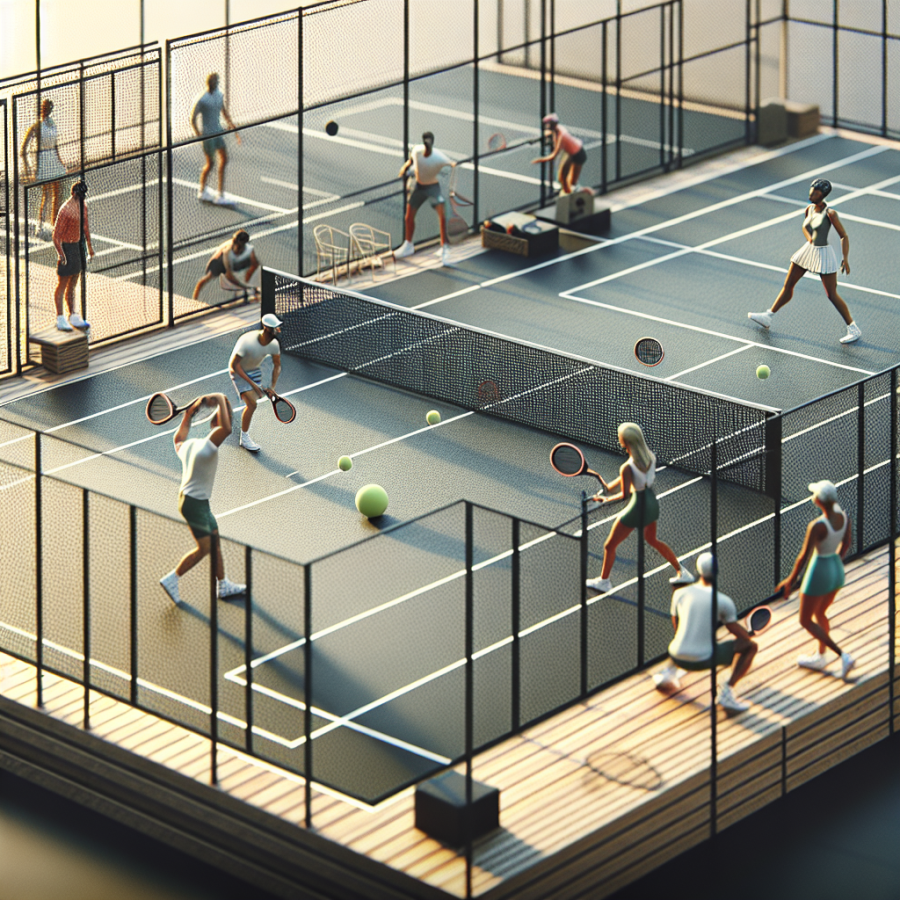Mastering the Basics: Getting Started with Padel's Exciting Relative
Platform tennis, often referred to as paddle tennis, is a game that shares many similarities with padel, yet embodies a number of distinct rules and characteristics that create a unique sporting experience. Both sports are typically played in doubles on a smaller court than traditional tennis, featuring walls that come into play similar to those of squash. However, platform tennis is particularly known for its grittier and more challenging environment.
One of the fundamental elements to master when stepping into the realm of platform tennis is the court itself. Unlike padel, the platform tennis court is smaller - 60 feet by 30 feet, enclosed by a 12-foot high screen. The gritty, gridded surface provides enhanced traction, which becomes essential when playing in colder weather, as platform tennis courts are often heated to sustain play during winter months. This court feature distinctly influences the game dynamics as the ball can be played off the screens that surround the court, allowing for a different strategic approach compared to padel.
To get started with the basics of platform tennis, one must also adapt to the equipment. The paddles used in platform tennis are solid with no strings, and aerodynamic holes have been designed into them. This results in less air resistance and more power, but also demands a high level of control from the player. Additionally, the ball used in platform tennis is a rubbery, spongy sphere that reacts differently to spins and strikes than the ball used in padel. Understanding these differences is critical for mastering the basics of the game.
The service in platform tennis is an underhand serve, which must be both started and received behind each team's respective baselines. This rule adds a layer of strategy as players must consider the best angle and height to place the ball effectively against their opponents. Unlike padel, there is only one serve allowed in platform tennis, adding pressure to serve efficiently.
As you work on these basic components, the tactical elements of platform tennis will also begin to take shape. Since the court is smaller but surrounded by screens, learning to anticipate the ball's return off the walls is essential. The play off the screens can turn defensive plays into offensive opportunities, and mastering this can give players a significant advantage. Developing quick reflexes to handle volleys and learning to position oneself optimally for smashes while preventing easy points from opponents are key skills to hone.
Finally, one cannot overemphasize the importance of consistent practice and match play.
Read also:
Bo-taoshi: The Dynamic Sport of Pole-Toppling Mayhem
Exploring the Adrenaline-Fueled Gameplay of Platform Tennis
Platform tennis, also known as paddle tennis, is an exhilarating racquet sport that shares some similarities with its more widely known cousin, padel. This game is particularly noted for its high-energy, adrenaline-fueled gameplay that captivates players and spectators alike. Here's an in-depth look at what makes the gameplay of platform tennis so enthralling.
One of the most distinctive features of platform tennis is the court itself. Enclosed by wire mesh walls that are in play, the smaller court size—just one-third the size of a traditional tennis court—ensures a fast-paced game where quick reflexes and strategic plays are paramount. The ability to play off the screens adds a unique twist to the game, allowing for extended rallies and surprising comebacks, as no ball is ever really out of reach.
The game's specialized equipment contributes to its unique tempo. The paddles used in platform tennis are solid, without strings, and feature a gritty surface to aid in spinning the ball. This allows for a variety of shots and substantial control despite the fast pace of play. The spongy, rubber ball used in platform tennis is designed to perform well in cold temperatures, which is perfect since the sport is traditionally played outdoors during the fall and winter months.
Another element that adds to the fast pace of platform tennis is the scoring system. Similar to tennis, it uses a standard point system—love, fifteen, thirty, forty—but unlike lawn tennis, platform tennis encourages a more aggressive style of play with the option for only one serve and a let serve being in play. This keeps the momentum of the game going and places a greater emphasis on each point.
The strategy in platform tennis is also nuanced due to the court's peculiarities. Players must master a combination of baseline play, net play, and the unique elements introduced by the screens. Positioning and teamwork in doubles play are crucial, with players often executing a series of volleys and lobs to maneuver opponents out of position before delivering a winning shot.
The physical demands of platform tennis appeal to those who enjoy an active, adrenaline-inducing experience. It's a sport that rewards agility, speed, and endurance, as players must cover a lot of ground quickly and be prepared to react to shots that can come from any angle, including off the walls.
The elements of cold weather and an outdoor environment add another layer of excitement to platform tennis.




